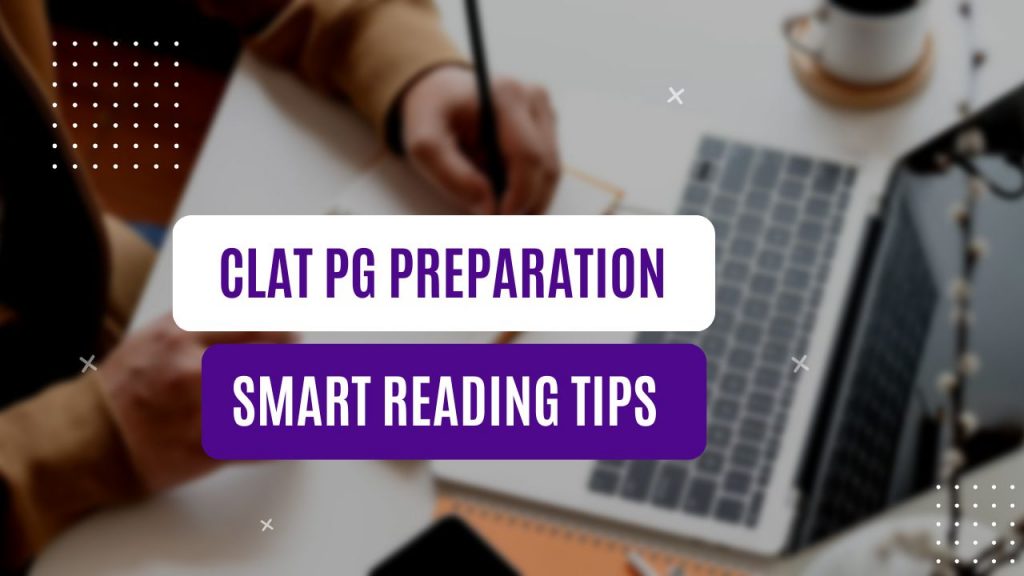Preparing for the CLAT PG 2026 or 2027?
One of the biggest challenges in CLAT PG preparation is reading long legal passages quickly and accurately. These passages—often 800–1,200 words from real Supreme Court judgments, statutes, or legal editorials—test legal reasoning, critical analysis, and time management.
But guess what? With a few smart reading tips and a little practice, you can turn that panic into confidence, and built like you who want to score big in legal reasoning and finish the paper on time.
This complete guide gives you step-by-step strategies plus interactive practice activities to help every law entrance exam aspirant improve speed reading for law exams, boost comprehension, and score higher.
Quick Poll for CLAT PG Aspirants
Comment below: Which is tougher in CLAT PG long legal passages—the complex legal vocabulary or the sheer length?
Your vote helps other law students see common hurdles, and I’ll reply with smart reading tips for the most-voted challenge.
- CLAT PG Smart Reading Tip #1
Step 1 – Scan the Legal Passage
Before deep reading, scan the passage in 30 seconds to identify:
1-Parties involved in the case
2-Court and year of judgment
3-Core legal issue or constitutional article
- Interactive Task: Start a timer and practice this “30-second scan” with any previous year CLAT PG question paper. Share your time in the comments—let’s compare speed reading progress.
CLAT PG Smart Reading Tip #2
Break the long legal passage into small, manageable chunks.
After each paragraph, write a one-line summary with the key legal reasoning.
Highlight keywords like ratio decidendi, precedent, Article 19, fundamental rights.
Interactive Idea: Post one of your one-line summaries in the comment box. Other CLAT PG aspirants can give feedback—great for peer learning.
CLAT PG Smart Reading Tip #3
Summarize in Three Lines
When you finish, compress the entire legal passage into a three-line conclusion:
Who won the case and why?
What principle of law controls the decision?
Any dissent or exception?
Try this on the practice excerpt below.
Practice Excerpt (Public Domain Legal Passage)
“The Supreme Court held that freedom of speech under Article 19(1)(a) includes the right to receive information. However, reasonable restrictions under Article 19(2) may be imposed to maintain public order and decency…”
Your Challenge:
1. Draft a three-line CLAT PG style summary in the comments.
Time & Mind Hacks for CLAT PG Legal Reasoning
Five-Minute Reading Sprints: Use a stopwatch; aim for 250–300 words per minute.
Colour Coding Technique: Yellow = facts, Green = holdings, Pink = dissent.
Active Recall Drill: Close the text, explain the legal principle aloud—perfect for memory retention.
Next Action Step –
Download Your Free CLAT PG Mock Test
Ready to put these strategies into practice?
Download free CLAT PG mock tests here and challenge yourself with real long legal passages.
CLAT PG – Mock Tests Question Paper
CLAT PG – Mock Tests Explanation
Use the timer, apply the 3-Step method, and track your word-per-minute score every day.
FAQ :
Q1. How can I increase reading speed for CLAT PG long legal passages?
Practice timed skimming, use finger pacing, and summarise each paragraph.
Q2. Should I read questions first or the legal passage first in CLAT PG?
Many toppers preview questions to focus their legal analysis. Experiment during mock tests.
Q3. Are these tips useful for other law entrance exams like AILET PG or DU LLM?
Yes, the same smart reading techniques improve performance in all law entrance exams with long comprehension passages.
Conclusion: Turn Smart Reading into Higher CLAT PG Scores
Mastering long legal passages in CLAT PG isn’t about reading faster alone—it’s about strategic scanning, slicing, and summarising.
By practising the 3-Step Smart Reading Method every day, you’ll strengthen legal reasoning, improve speed reading for law exams, and walk into the CLAT PG exam hall with confidence.
Remember:
- Scan for anchors (parties, court, issue)
- Slice each paragraph into a quick one-line gist
- Summarise the whole passage in three crisp lines
These habits will not only boost your CLAT PG preparation but also help with AILET PG, and other law entrance exams where complex judgments appear.



